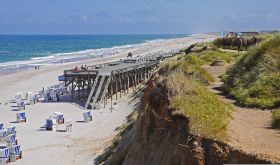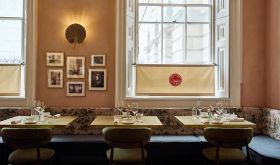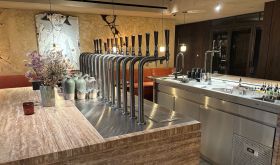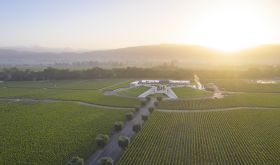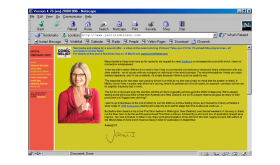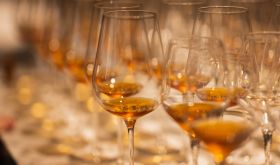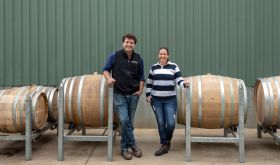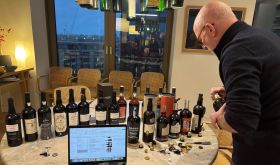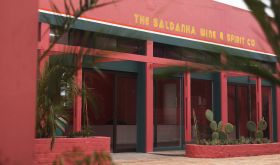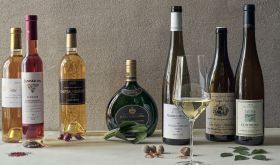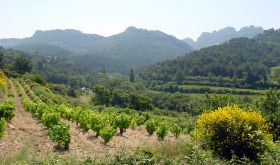I recently flew business class from London to Tokyo on Japan Airlines and then back again in the same class on British Airways. What follows is a comparison of the food and drink on offer in both.
I have some experience of airline catering. For a decade I was a member of BA’s Culinary Council along with such renowned chefs as the late Michel Roux, Shaun Hill, Vineet Bathia, Richard Corrigan, Mark Edwards of Nobu and the pastry chef Claudia Fleming.
We were all hired by and under the leadership of BA’s ultra-enthusiastic David Stockton, who was fanatical in his ambition to make BA the best in class and who had one response to every suggestion and recipe put forward by the Council. Was it DOB? These crucial three letters stood for Doable On Board.
This was a vivid example of Stockton’s common-sense approach. DOB? was his constant response to every recipe and idea put forward by chefs operating in large kitchens with plenty of assistance and whose sole objective was to delight their customers. Their circumstances were very different from those of cabin crew working in a cramped galley where the cooking technology is as limited as the space and the overall aim is to land safely and as close to the scheduled time as possible.
This is the biggest conundrum facing anyone trying to improve the food served at 33,000 feet. Technology in the galley is limited; most planes were designed several years ago; and cold food is not the answer as anyone knows who has felt the temperature of their suitcase on the carousel after a transatlantic flight. It’s cold up there.
The reason I believe that the following comparison is fair is that neither airline was flying out of their home terminal. The JAL flight started out from Heathrow, London, while the BA one began in Haneda, Tokyo. It is much easier logistically for any airline to fly out of their home base. (I should perhaps also add that we paid full price for our tickets.)
Equally important is the responsibility any airline must accept for looking after you while you are in the air. To this extent the airline is in the hospitality business and both these flights were long: 12.5 hours to Tokyo and more than 14 hours homewards, plus a further 45 minutes on the ground because we were rerouted via Alaska and Greenland instead of Turkey, which took an hour off the return journey.
British Airways may have put a great deal of thought into the composition of their range of main courses but what is available for snacking between meals is equally important on such a long flight.
The menus
No comparison really. On the JAL overnight flight I was offered a 16-page booklet that was specific to my flight. On the back page was printed JL 042, London Heathrow to Haneda. By contrast the BA booklet was a six-page foldout that was not at all specific to the route I was flying. The menu on the right below was obviously one for quite a lot of long-haul flights that week or that month.
Part of the reason, admittedly, for the JAL document’s greater length was that everything was printed in both English and Japanese, whereas I was given only an English menu by BA. But the JAL menu was also printed in colour with the full names of the chefs responsible and the drinks consultants listed. In the JAL menu there is a page devoted to Japanese sake and the Japanese spirit shochu. There is a line in the BA menu offering hot chocolate by Cadbury’s, a company that has been American-owned since 2020.
The initial meal and its timing
The JAL flight took off at 9.40 am and the BA day flight at 8.50 am. While there could be some dispute as to which meal JAL should serve first, there is no question as to which BA should serve and what most, if not all their customers were expecting. After all, to reach the airport by 7 am everybody would have had to leave their homes or hotels by 6.30 at the latest. Which means that they, like us, would have missed breakfast.
This is the meal the British have excelled at for years and one that, in the past, BA served extremely well, with an omelette, a full English breakfast, or a bowl of porridge topped with brown sugar. And we still have happy memories of the BA breakfast smoothie. This is also a meal that, even given the rising price of eggs, is relatively inexpensive and puts the customer in a mood where they can catch up on sleep afterwards.
So when the BA stewardess asked what I would like to eat, I answered ‘breakfast please’ which was greeted with ‘I’m sorry, that’s not possible’. At some time before 10 am Japanese time (2 am UK time) I was asked to choose my drink from the bar before choosing from a menu entitled ‘It’s time to dine’, a menu with options that bore no relation to the cuisine of our country of departure. I chose a smoked tuna niçoise salad (potatoes barely cooked), braised beef cheeks (below) and a warm, distinctly stodgy rum-and-raisin pudding.
JAL offered a choice of either a Japanese kaiseki menu from chef Hayashi of Roketsu restaurant in London or an ‘international’ menu of either beef or red snapper. From a heading irodori gozen referring to the colourful array of dishes, I enjoyed trout roe, deep-fried padrón pepper and confit beef fillet before deep-fried sea bream, grilled chicken, rice and miso soup before finishing with yuzu cheesecake. The food was very good but even more impressive was the relaxed nature of the service, which helped the journey along. Below is the Japanese main course that followed what is shown at the top of this article.
The wines
This is where BA at one time excelled, as the wines were chosen as a result of blind tasting by a panel that once consisted of Colin Anderson MW, Michael Broadbent MW, Hugh Johnson and JR, the lone survivor after a post-9/11 cull. But that was decades ago. JR resigned as BA wine consultant in 2010, when wines began to be bought on price rather than quality.
Today the wines on BA seem to be selected by an anonymous group. There is no mention of anyone in the menu, although our contributor Tim Jackson MW is involved. This is a shame because there was one wine on the BA flight that was a terrific pick, described as ‘Our Cellar Selection, Swartland Syrah/Shiraz 2021/3 South Africa’, this was great wine to drink at altitude. Full-bodied with spice, this was delicious, and three glasses later I was asleep for a couple of hours.
JAL’s wine list, put together by Motohiro Okoshi, is much broader: two champagnes, a Japanese wine, and three choices of white (from Tyrrells, Gerd Stepp and Dönnhoff), plus two reds (Stepp again and Chapoutier). But neither of these was the equivalent of the BA Syrah.
Food and the rest of the journey
On a 14-hour flight, everyone gets hungry and the offer of a continuous service, or even a display, of food and drink, does help to pass the time. This was undoubtedly the biggest difference between JAL and BA.
Over two pages, JAL offered a wide selection of salads, sandwiches, light meals, and excellent original noodles as shown below. Opposite was a washoku plate of Japanese food and an ‘international plate’, the main dish of which was a good old-fashioned British afternoon tea, replete with sandwiches, scones and eclairs – an option conspicuously absent from the BA menu.
The BA menu offers as its second attempt to feed you, routinely two hours before landing apparently, a three-course meal which included one of the most bizarre dishes I have ever encountered. Described as ‘hoki fish katsu salad’, this consisted of a piece of New Zealand fish, breaded (katsu) and plonked on top of salad. Served cold. A lesson in why cold food should not be served at altitude, this was awful.
The Japanese counterpart to this included this Saikyo miso-grilled salmon and grilled egg roll with a little parcel of rice and a soup.
There was a printed encouragement by BA in the nine or ten hours between the two meals to head to the galley, where, supposedly, ‘a range of snacks and indulgent treats await you’. There was a small fridge of mini sausage rolls plus a Dairy Milk chocolate bar and packets of Hill’s custard cream biscuits. When I asked the stewardess whether a piece of cake might be available with my cup of tea, she pointed me towards the biscuits.
Conclusion
Our bodies were grateful that we paid the extra and travelled business class both outwards and back from Tokyo because of the length of the flight. But our stomachs and the mood in which we landed were very disappointed by the BA offer. It seems as though the bean counters are in charge of hospitality, a subject at which BA has never excelled and perhaps never will. One of the rules of hospitality is that any restaurant is as good as its weakest link and here BA business class has to be judged on whether one believes that several packets of custard creams and a thin bar of Cadbury’s Dairy Milk ‘chocolate’ are good enough to see a cabin of business class travellers through nine or ten hours in the air between meals.
I, for one, don’t believe they are.
But the most damaging consequence of BA’s ungenerous hospitality is that it perpetuates a myth: that Britain is lacklustre and unambitious when it comes to cooking the best produce, at looking after its customers and at making any visitor to its shores feel welcome. Hospitality in the UK has been infinitely better than this for at least the past two decades. What JAL manages with confidence, BA should at least equal.










